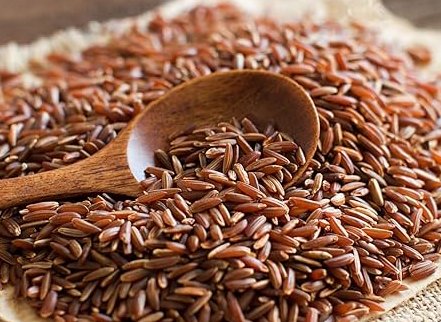Rajamudi rice is a traditional variety of rice that’s popular in South India, especially in Karnataka. It’s known for its unique color, which can range from reddish-brown to dark purple.
Benefits of Rajamudi Rice
Rich in Antioxidants:
Rajamudi rice contains anthocyanins, which are antioxidants that help fight free radicals in the body. These compounds may have potential anti-inflammatory properties.
High in Fiber:
Since it’s typically a whole grain (unpolished), Rajamudi rice is rich in dietary fiber. Fiber helps improve digestion, regulate blood sugar levels, and maintain a healthy weight.
Low Glycemic Index:
Rajamudi rice has a low glycemic index, which means it causes a slower rise in blood sugar levels compared to regular white rice. This makes it a better choice for people with diabetes or those looking to manage their blood sugar levels.
Rich in Nutrients:
Rajamudi rice is a good source of essential nutrients like iron, calcium, and B-vitamins, which are important for overall health, including maintaining energy levels, supporting the immune system, and promoting bone health.
Improves Digestion:
The high fiber content in Rajamudi rice aids in digestion and can help prevent constipation and promote a healthy gut.
Helps with Weight Management:
Due to its high fiber content and low glycemic index, Rajamudi rice can help with feelings of fullness, preventing overeating and contributing to weight management.
Natural Source of Vitamins:
It contains vitamins like Vitamin B1 (thiamine), B3 (niacin), and B6, all of which contribute to energy production and healthy brain function.
Concerns:
While Rajamudi rice offers various health benefits, it’s important to consume it in moderation like any other food. Additionally, because it’s less refined than white rice, it may take a bit longer to cook, but the nutritional benefits often outweigh the extra cooking time.

Leave a Reply